Last Updated on June 19, 2024 by teamobn
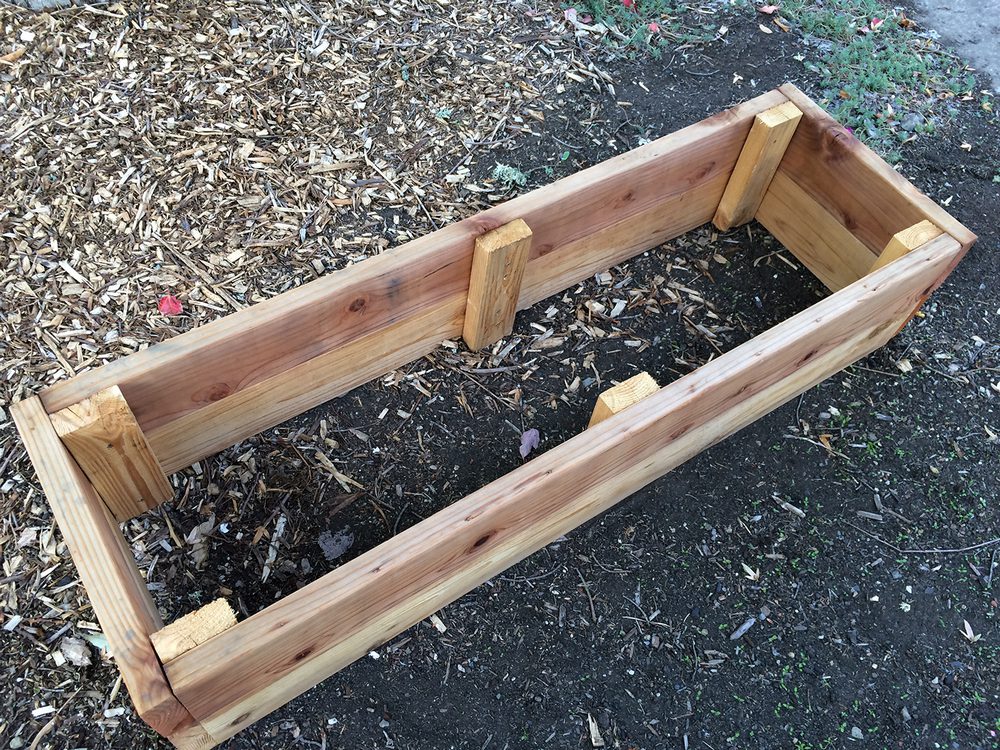
One critical decision in growing plants at home is the type of raised garden beds to use. Wooden and metal beds are the usual contenders. Specific garden bed materials have advantages and disadvantages, which can affect your plants in the long run.
This article will delve into the battle of materials of raised garden beds, helping you decide between wooden and metal raised garden beds.
Contents
- 1 What Are Wooden Garden Beds?
- 2 What Are Metal-Raised Garden Beds?
- 3 Advantages of Wooden Raised Garden Beds
- 4 Disadvantages of Wooden Raised Garden Beds
- 5 Advantages of Metal-Raised Garden Beds
- 6 Disadvantages of Metal-Raised Garden Beds
- 7 Cost Comparison
- 8 Environmental Impact
- 9 Comparison of Specific Plants
- 10 What to Fill Your Garden Beds
- 11 Conclusion
What Are Wooden Garden Beds?
Wooden raised garden beds are raised structures made of various types of wood. They are often a go-to choice for gardeners who like a natural look. Cedar and redwood are popular wood choices because they resist rot. You can easily find kits for these beds or build one yourself. They blend well with most landscapes and offer good drainage for plants.
What Are Metal-Raised Garden Beds?
Metal-raised garden beds are made from materials like steel, aluminum, or iron. They’re known for their durability and sleek, modern look. These beds don’t rot and can last for many years. Some metal beds have a special coating to prevent rust. They’re usually quick to set up and offer excellent heat retention, which can help with plant growth.
Advantages of Wooden Raised Garden Beds
When creating the perfect space for your plants, wooden raised garden beds offer a range of benefits. These beds not only provide an attractive aesthetic but also offer functional advantages. Let’s delve into the perks that make wooden beds a popular choice for many gardeners.
Natural Aesthetic Appeal
One of the first things you’ll notice about wooden raised garden beds is how well they blend with nature. They offer a rustic, natural look that complements almost any garden setting. The wood can be stained or painted to match your garden’s color scheme. The aesthetic appeal of wood beds often makes them the focal point in gardens, creating a warm and inviting atmosphere.
Affordability
Wooden raised garden beds are often less expensive than their metal counterparts. The cost of wood, especially types like pine, can be relatively low. If you’re a DIY enthusiast, you can even repurpose wooden planks or pallets to create your beds. It makes it a cost-effective option for gardeners on a budget.
Easy to Assemble
Assembling a wooden raised garden bed usually requires minimal tools and expertise. Many wooden beds come in kits with pre-drilled holes and all the necessary hardware. Even without a kit, a few screws, a drill, and some wood planks are typically all you need. The ease of assembly makes these beds a practical choice for gardeners of all skill levels.
Good Insulation Properties
Wood is a natural insulator. It does a good job of retaining moisture and protecting plants from extreme temperature fluctuations. During hot summers, wooden beds are less likely to overheat. In winter, they can offer some insulation against frost. Insulation makes it easier to maintain a consistent soil temperature, which can benefit plant growth.
Flexibility in Design
The versatility of wood allows for a lot of creativity in design. You can easily customize the size, shape, and height of your bed to fit your garden’s layout. Whether you want a simple rectangular design or something more intricate, wooden beds offer you the flexibility to create it. Some gardeners even add trellises or benches to their wooden beds for functionality.
Organic and Chemical-Free Options
For those who prioritize organic gardening, many types of untreated wood are available. Woods like cedar and redwood are naturally rot-resistant and don’t require chemical treatments to last. It can be an important factor for gardeners who want to keep their soil as organic as possible.
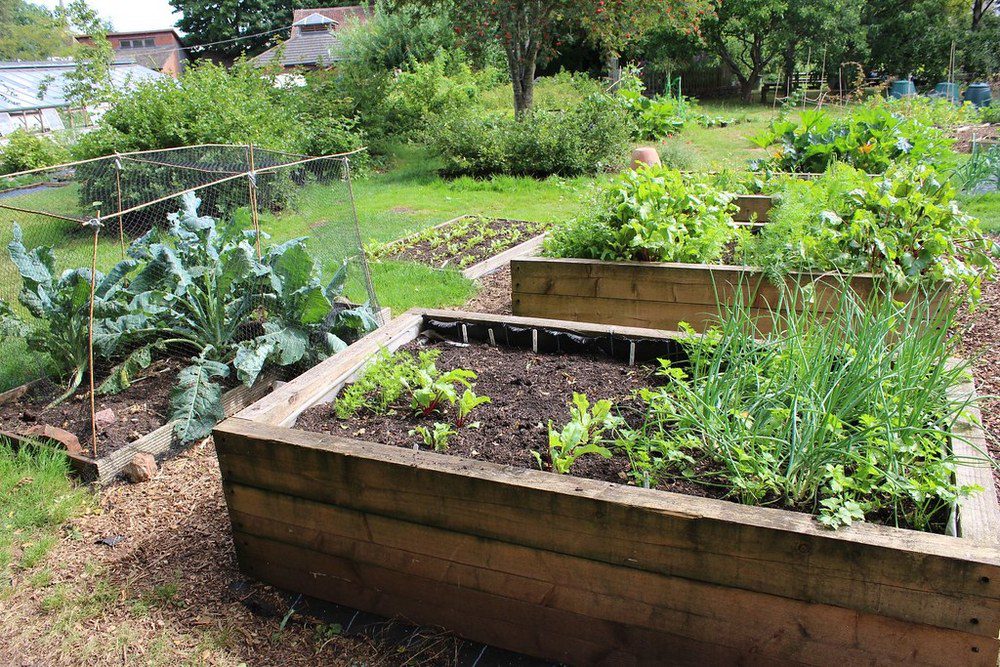
Disadvantages of Wooden Raised Garden Beds
While wooden raised garden beds come with a slew of advantages, they also have their drawbacks. It’s essential to weigh these downsides against the benefits before choosing. Here’s what you need to know about the potential disadvantages of wooden raised garden beds.
Susceptible to Rot
One significant downside of wooden beds is their vulnerability to rot. Even though woods like cedar and redwood are more resistant, they’re not immune. When wood decays, it weakens the structure of the garden bed. Rotten wooden planks could result in the bed collapsing, which may harm your plants.
Limited Lifespan
Compared to metal beds, wooden raised garden beds have a shorter lifespan. Even with proper care, you may find yourself replacing or repairing wooden beds every few years. This shorter lifespan can offset the initial savings from their lower cost.
Requires Regular Maintenance
Wooden beds need more upkeep than metal beds. To prolong their life, you’ll have to seal or stain the wood periodically. Neglecting to do so may speed up the rotting process. The need for frequent maintenance can be a turnoff for some gardeners who prefer a more hands-off approach.
May Attract Pests
Wooden beds can be a magnet for pests like termites, weakening the structure over time. Other pests, like rodents, may find wooden beds easier to climb or gnaw through. Using a wooden garden bed means you’ll have to take extra steps for pest control, adding another layer to your gardening tasks.
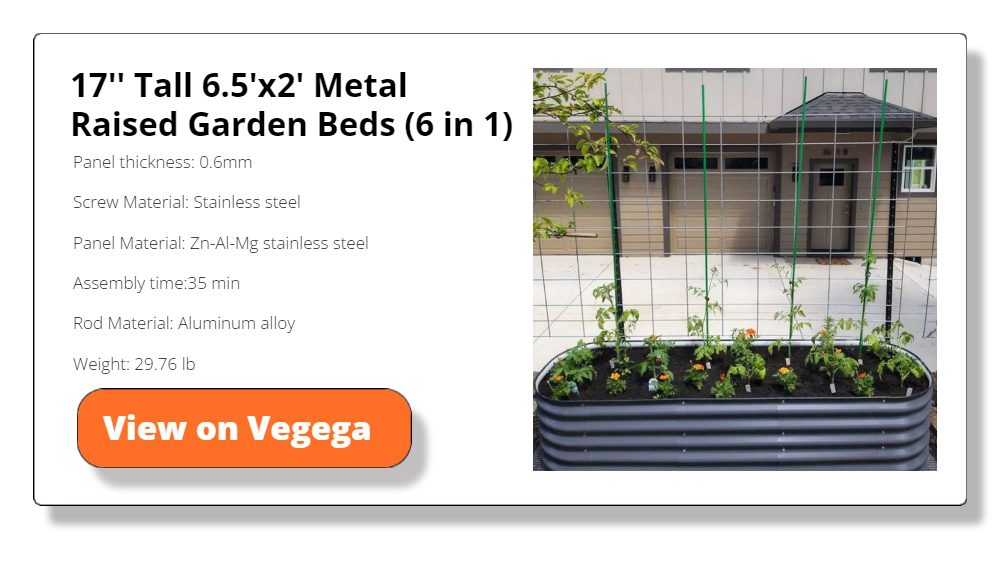
Advantages of Metal-Raised Garden Beds
Metal-raised garden beds offer a compelling alternative to their wooden counterparts. Crafted from materials like steel, aluminum, or iron, these beds provide several unique advantages. Let’s explore the features that make metal raised beds an excellent choice for modern gardens.
Long-Lasting Durability
When it comes to durability, metal beds take the cake. Unlike wood, metal doesn’t rot or degrade quickly. Many metal beds are coated with rust-resistant materials, ensuring a long life. You can expect your metal bed to last for years with minimal maintenance, making it a long-term investment.
Look for ones made from galvanized steel, This garden bed comes in different colors and sizes. The material is highly resistant to corrosion and is easy to install.
Modern Aesthetic
Metal raised beds offer a sleek and contemporary look. The clean lines and shiny surfaces can complement modern home designs and garden layouts. If you’re aiming for a minimalist or industrial aesthetic, metal beds can be the perfect fit.
Minimal Maintenance
One of the standout advantages of metal beds is their low maintenance. Unlike wood, metal doesn’t require sealing or staining to maintain its condition. Simply hose them down or wipe them clean as needed. This ease of care can free up more of your time for actual gardening.
Excellent Heat Retention
Metal is a good conductor of heat, which can benefit your plants. The material absorbs heat during the day and releases it at night. This heat retention can extend your growing season, allowing you to plant earlier in the spring and harvest later into the fall.
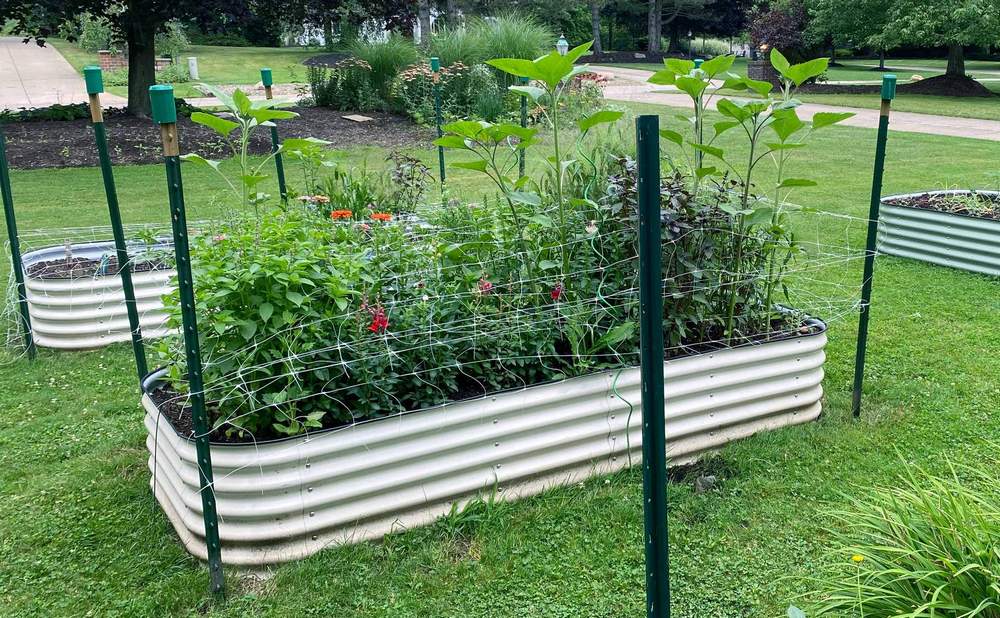
Pest Resistant
Metal raised garden beds are less inviting to common garden pests compared to wood. Termites and rodents aren’t attracted to metal, making these beds a solid choice for minimizing pest-related issues. This characteristic cuts down on the need for additional pest control measures.
Versatility in Design
Metal raised garden beds often come in modular designs, allowing for easy customization. You can reconfigure the shape or expand the size as your gardening needs change. Some metal beds even feature adjustable heights, providing added flexibility for planting different types of crops.
Disadvantages of Metal-Raised Garden Beds
Metal-raised garden beds have a lot to offer, but they come with drawbacks. Knowing these disadvantages can help you make an informed choice for your garden. Let’s dive into some issues you might encounter with metal beds.
Higher Cost
One of the most significant downsides of metal beds is their cost. Quality metal beds, especially those of corrosion-resistant materials, can be pricey. While they may last longer, the initial investment is higher than wooden beds.
Risk of Rust
Even if a metal bed is coated with a rust-resistant layer, there’s still a risk of rusting over time. Once the protective layer gets chipped or damaged, the metal underneath becomes vulnerable. Rust not only ruins the bed’s appearance but can weaken its structure.
Heat Concerns
While metal’s ability to retain heat can be a plus, it can also be a drawback. In hot climates, metal beds can get extremely hot, possibly harming the plants inside. You may need to take extra steps to insulate the soil or shade the beds to protect your plants.
Limited Organic Options
For gardeners committed to organic methods, metal beds may pose a problem. Some metals are treated with chemicals to increase their durability or rust resistance. These chemicals could potentially leach into the soil, although the risk is generally considered low.

Cost Comparison
When choosing between wooden and metal raised garden beds, the cost is often a deciding factor. Both initial and long-term expenses should be considered. Let’s break down the cost comparison to help you make an informed decision.
Initial Investment
Wooden beds typically have a lower upfront cost. Materials like pine or even recycled wood can be quite affordable. In contrast, high-quality metal beds often come with a higher price tag. If you opt for corrosion-resistant or specialty metals, the cost can increase even further.
Longevity and Replacement
While wooden beds are cheaper initially, their shorter lifespan means you’ll likely replace them more often. Metal beds, despite their higher initial cost, tend to last longer. Over time, replacing wooden beds could add up to more than the one-time investment in a metal bed.
Maintenance Costs
Wooden beds require regular maintenance, like sealing or staining, which adds to their long-term cost. Metal beds, on the other hand, need minimal upkeep. You won’t have to invest in sealants or stains, making them more cost-effective in the long run.
Optional Features
Both wooden and metal beds can come with optional features like built-in trellises, benches, or irrigation systems. These additions can add to the overall cost, but they’re available in both materials. Choose based on your gardening needs rather than the material alone.
When it comes to cost, both wooden and metal raised garden beds have their pros and cons. Wooden beds may be cheaper upfront but could cost you more in the long run due to maintenance and replacement. Metal beds require a higher initial investment but offer durability and low upkeep.
Consider immediate and long-term costs to make the best choice for your garden.
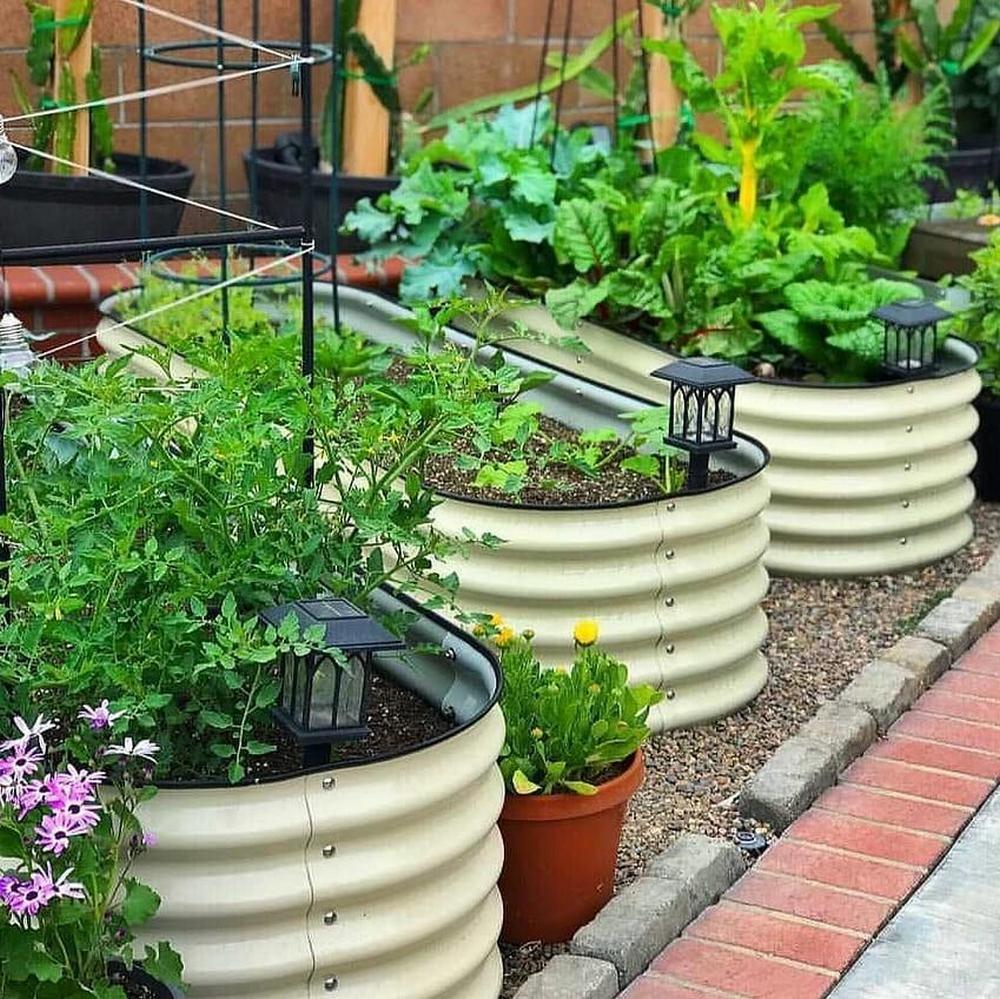
Environmental Impact
Environmental impact is an important consideration when choosing between wooden and metal raised garden beds. Both materials have unique environmental footprints. Understanding these can help you make a more sustainable choice for your garden.
Wood Source and Sustainability
The sustainability of wooden beds depends on the type of wood used. Opt for woods that are responsibly harvested or carry a certification for sustainability. Some wood types, like bamboo, are fast-growing and considered more sustainable. However, using chemical treatments on the wood can lessen its environmental friendliness.
Metal Production and Recyclability
Metal beds, particularly those made of aluminum or steel, are highly recyclable. However, the production process for these metals can be energy-intensive and may contribute to carbon emissions. Choosing beds made from recycled metal can mitigate some of these environmental concerns.
Durability and Lifespan
The longer a product lasts, the less often it needs to be replaced, reducing its overall environmental impact. In this regard, metal beds usually have the upper hand due to their durability. Wooden beds, especially those not made from rot-resistant wood, may require frequent replacement.
Chemical Treatments
Both wooden and metal beds can undergo chemical treatments for durability or pest resistance. These treatments may have environmental implications if they leach into the soil or water supply. If this concerns you, look for untreated wood options or metal beds with non-toxic coatings.
Both wooden and metal raised garden beds have their environmental pros and cons. Wooden beds can be a sustainable choice if sourced responsibly, while metal beds offer durability and recyclability. Always consider the lifespan and potential chemical treatments when assessing the environmental impact. Your choice can contribute not just to a thriving garden but also to a healthier planet.
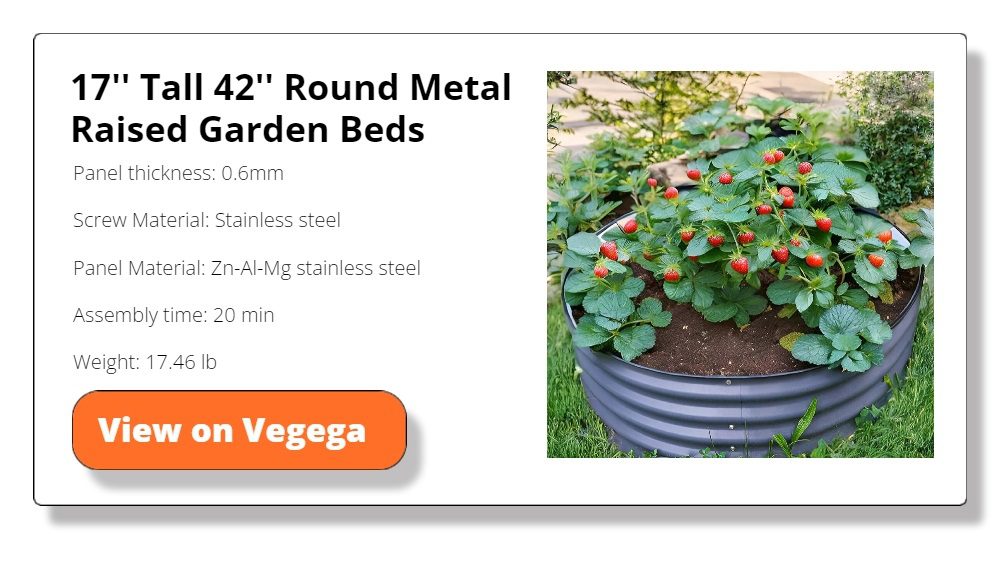
Comparison of Specific Plants
Not all plants have the same needs, and the material of your raised garden bed can make a difference. Wooden and metal beds offer distinct advantages and disadvantages for specific plants. Let’s examine how each material fares for various types of vegetation.
Root Vegetables
For root vegetables like carrots and potatoes, wooden beds offer better insulation. The wood helps maintain a more stable soil temperature, which is crucial for root development. Metal beds can get too hot, potentially harming these types of plants.
Leafy Greens
Plants like lettuce and spinach are less sensitive to temperature fluctuations and can thrive in wooden or metal beds. However, the easier-to-adjust height of some metal beds can make harvesting leafy greens more convenient.
Fruiting Plants
For fruiting plants like tomatoes and peppers, metal beds may offer an advantage. These plants benefit from the heat retention properties of metal, especially during the early and late growing seasons. Be cautious in extremely hot climates, where metal could become too hot.
Herbs
Herbs prefer well-drained soil and can do well in wooden and metal beds. However, if you’re growing herbs that prefer a consistently moist environment, wooden beds may offer better water retention.
Perennials
If you’re planting perennials that will stay in the bed year after year, consider the material’s lifespan. Metal beds, being more durable, are generally a better long-term home for plants that you won’t be rotating out seasonally.
What to Fill Your Garden Beds
Once you’ve chosen between a wooden or metal raised garden bed, the next step is filling it with the right materials. The contents of your bed play a critical role in the success of your plants. Here’s a guide on what to place in your raised garden bed, regardless of its material.
Soil Mix
Start with a good-quality soil mix that meets the needs of the plants you’re growing. For most vegetables and flowers, a mix of topsoil, compost, and other organic matter works well. Make sure the soil is loose and well-drained to encourage healthy root growth.
Fertilizers and Amendments
Depending on your plant’s needs, you may need to add specific fertilizers or soil amendments. Slow-release granular fertilizers are a popular choice for raised beds. For more immediate needs, liquid fertilizers can be applied directly to the soil.
Mulch Layer
A layer of mulch on top of the soil helps retain moisture, suppress weeds, and improve soil quality. Organic mulches like straw, wood chips, or leaves are commonly used. Just be sure the mulch you choose is free of seeds or pests.
Optional Layers
Some gardeners swear by adding a layer of gravel or stones at the bottom of the bed for extra drainage, especially for plants that dislike soggy soil. Others add a layer of landscape fabric to prevent weeds. These are optional but can be beneficial depending on your specific gardening needs.
Filling your raised garden bed involves more than just dumping in some soil. The right mix of soil, fertilizers, and other materials can make all the difference in your garden’s success. Whether you’ve opted for a wooden or metal bed, what goes inside is equally important. Tailor your bed’s contents to the specific needs of your plants for the best results.
Conclusion
Choosing between wooden and metal raised garden beds involves weighing costs, durability, and the specific plants you wish to grow. Each material has pros and cons, so your choice will likely depend on your unique gardening needs and goals.








